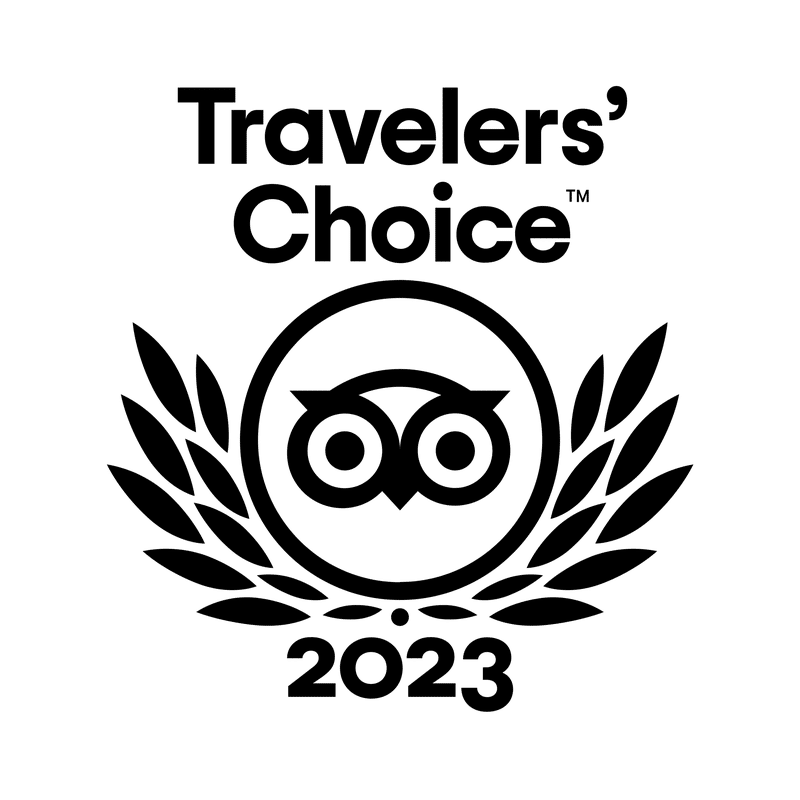|
I'm so stoked to reflect on the incredible year we've had, especially with the introduction and updates to some of our most beloved self guided bike tours. Table of Contents
Our commitment to providing unique and memorable experiences for cycling enthusiasts has been wonderfully realized in 2023, here are some of the highlights for me: Eurovelo 1: From Porto to LisbonOur newly updated Eurovelo 1 self-guided bike tour has been a standout experience. Starting in the vibrant city of Porto, riders embarked on a journey south along the stunning Atlantic coast, exploring charming towns and witnessing the raw beauty of Portugal's western shores. The route's varied landscapes, combined with Portugal's rich culture and cuisine, made every pedal worth the effort. The final descent into Lisbon, with its historic charm and lively streets, was a fitting finale to this unforgettable tour. Algarve Self-Guided Bike TourThe Algarve region, known for its breathtaking cliffs, golden beaches, and sunny skies, was once again a favorite among our cyclists. This year, we updated the tour to include more hidden gems and less-traveled paths, allowing riders to fully immerse themselves in the Algarve's natural beauty and tranquil seaside towns. The blend of challenging rides and relaxing coastal stops was a perfect balance that left our guests longing to return. Azores Self-Guided Tour: The Island of São MiguelThis year, we were excited to launch the newly updated Azores self-guided bike tour on the enchanting island of São Miguel. Known for its lush landscapes, volcanic lakes, and thermal springs, São Miguel offered an entirely unique biking experience. Our cyclists were captivated by the island's dramatic scenery, from the emerald green and blue hues of the Sete Cidades crater lakes to the steaming geothermal pools of Furnas. The tour's routes were carefully designed to showcase the island's diverse natural beauty, with opportunities to stop at charming coastal villages and taste the local Azorean cuisine. This tour has quickly became a favorite for its blend of natural wonders, cultural richness, and serene cycling paths, making it a must-do adventure for any cycling enthusiast! Picos de Europa Self-Guided Bike TourExploring the majestic Picos de Europa was a dream come true for many. This tour, weaving through dramatic mountain landscapes, offered an exhilarating challenge for our more adventurous riders. The panoramic views, the sense of achievement in conquering steep ascents, and the tranquil ambiance of the Picos' valleys provided a deeply rewarding experience. The local cuisine and warm hospitality were the cherries on top of this high-altitude adventure. Camino de Santiago Self-Guided Bike TourLastly, our Camino de Santiago bike tour continued to inspire and uplift. This spiritual journey, traversing through the serene countryside of northern Spain, has been a source of reflection and personal growth for many. The blend of historical sites, rural landscapes, and the camaraderie among fellow pilgrims made this more than just a bike tour – it was a journey of the soul. Ride OnAs we move into the next year, we're excited to keep improving and expanding our tours, always with the aim of creating life-enriching cycling adventures. We're deeply grateful to our community of riders who have joined us this year and look forward to welcoming new and returning faces in the future.
0 Comments
Spain, with its striking landscapes, diverse culture, and rich history, is a haven for cycling enthusiasts. From the sun-drenched coasts of Andalucia to the lush vineyards of La Rioja, Spain's topography presents a variety of beautiful routes for every type of cyclist. In this article, I'll share with you my top 5 destination recommendations for self guided bike tours in Spain and give you my highlights of each!
Table of Contents1. Camino de Santiago - The Pilgrim's RouteThe Camino de Santiago is a pilgrimage route with centuries-old traditions, providing an unforgettable spiritual journey for cyclists. While there are several main Camino pilgrimage routes through Spain, my personal favouirte is stil the "Camino Frances". This route invites you to explore historical paths winding through picturesque villages, lush green valleys, and hilly terrains. This epic bike tour route showcases the verdant splendor of the Pyrenees, the vibrancy of regions like Navarre and La Rioja, with their historical towns and lush vineyards, and the tranquil beauty of Castilla y León's plains and hills. The route's historical highlights include cities like Pamplona, Burgos, and León, each boasting a rich past. The final leg takes you through the picturesque region of Galicia, leading to the grand Santiago de Compostela Cathedral - a sight providing an overwhelming sense of achievement. Cycling the Camino Frances is more than a tour; it's an unforgettable journey through history, diverse cultures, and a path to self-reflection and spiritual fulfillment. Main Highlights of the Camino de Santiago bike tour route (Starting in Leon): - Starting in the beautiful city of Leon, noted for its gothic architecture. 2. Picos de Europa - Mountain MajestyFor the adventurous cyclist, the Picos de Europa tour provides a stunnigly scenic challenge. This self guided bike tour route takes you into Spain's first national park, with stunning mountain scenery, deep gorges, and verdant meadows. This rugged landscape of towering limestone peaks, deep gorges, and lush valleys offers a scenic and rewardin ride.
Iconic sights such as the massive limestone wall of Naranjo de Bulnes and the breathtaking Garganta del Cares gorge punctuate the route. Along the way, cyclists will pass through quaint mountain villages like Potes and Cangas de Onís, providing glimpses into traditional Spanish life. Despite its demanding nature, the tour balances the challenge with rewarding experiences. Spotting local wildlife, such as the chamois and griffon vultures, or tasting regional cuisine, like the hearty fabada asturiana stew or the pungent Cabrales cheese - if that tickles your fancy - add further depth to the adventure. In essence, the Picos de Europa bike tour is an epic journey that tests your physical stamina while immersing you in striking natural beauty, local culture, and history. Main Highlights of the Picos de Europa bike tour route: - Starting in the medieval town of Cangas de Onís, featuring the historic Roman Bridge. 3. Andalucia - The Southern SerenadeAndalucia offers a perfect blend of cultural exploration and scenic rides. This bike tour route showcases the region's Moorish history and architecture, flamenco music, vibrant festivals, and tapas culture at its best!
A self-guided bike tour in Andalucia is a picturesque journey through a region rich in cultural heritage and natural beauty. Beginning in the historical city of Seville, with its stunning Moorish architecture, the tour leads you through serene olive groves and charming white-washed villages, offering glimpses of traditional Spanish life. Alongside the scenic rides, Andalucia's vibrant culture is experienced through the region's flamenco music and local festivals, which fill the air with rhythm and joy. The journey is not just a feast for the eyes and ears - Andalucian cuisine, with its tapas, paellas, and gazpacho, is sure to delight your taste buds, and providing an unforgettable Spanish adventure. Main Highlights of the Andalucia bike tour route: - Beginning in the historic city of Seville, famed for its majestic Alcázar and lively tapas scene. 4. Catalonia - The Mediterranean MagicCatalonia offers cyclists the chance to experience Spain's artistic side along with its stunning coastal beauty. This bike tour route combines diverse terrain, beautiful beaches, medieval towns, and world-class gastronomy.
The diverse terrain encompasses coastal plains, rolling countryside, vineyards, and forests, offering a visually captivating and mildly challenging ride. The journey is also steeped in history, with stops at medieval towns like Girona and Besalú, offering a glimpse into Catalonia's rich past. Catalonia's culinary delights play a significant part in the tour. The region is known for its innovative gastronomy, combining traditional recipes with avant-garde techniques. From local seafood to delicious Catalan dishes like 'pa amb tomàquet' and 'crema catalana', each meal adds to the richness of the Catalan experience. In a nutshell, the Catalonia bike tour is more than a cycling adventure - it's a journey through history, culture, and stunning landscapes, topped with world-class gastronomy, creating another unforgettable Spanish expedition. Main Highlights of the Catalonia bike tour route: - Starting off in Barcelona, a city famed for its unique architecture, including Gaudí's Sagrada Familia. 5. La Rioja - The Vineyard VoyageThe La Rioja tour is a dream for wine enthusiasts. Cyclists pedal through rolling vineyards, visit renowned bodegas, and sample world-class wines, all while enjoying the region's exceptional landscapes, against the backdrop of the Cantabrian Mountains. Highlights of the tour include visiting the wine capital, Haro, with its array of renowned bodegas. Here, cyclists can learn about winemaking traditions, explore ancient cellars, and sample acclaimed wines like the full-bodied Tempranillo. Beyond viticulture, La Rioja presents beautiful landscapes and historic landmarks. For instance, the UNESCO World Heritage Site monasteries of Suso and Yuso in San Millán de la Cogolla add a touch of historical fascination. Complementing the wine, the region's gastronomy is another treat. Traditional dishes like patatas a la riojana and bacalao a la riojana pair perfectly with local wines, providing a delectable culinary experience. For those more inclided for a broader cycling adventure, the Camino Frances route passes through the Rioja, offering a shorter but equally exciting experience of the wine capital of Spain! Main Highlights of La Rioja bike tour route: - Beginning in the bustling city of Logroño, the capital of La Rioja and the heart of wine country. Ready to ride Spain's Best Routes?Whether you're seeking a spiritual journey, mountain adventure, cultural immersion, beach retreat, or a wine-tasting experience, Spain's top self-guided bike tours have a lot of diversity to offer every level of cyclist. As you embark on these incredible tours, each pedal stroke takes you closer to the soul of this enchanting country. Hop on your bike, and let Spain's allure unfold before your eyes - you won't regret it! As a food lover, I have traveled all over the world in search of the best cuisine, and I can confidently say that Girona, a small city in northeastern Spain, is a hidden and not-sohidden gem for foodies. With a rich culinary heritage, Girona offers a diverse range of dining options, from Michelin-starred restaurants to cozy local eateries. In this guide, I will take you through the top-rated restaurants, hidden gems, and the more affordable dining options in Girona, so read on to find out where to eat out in Girona! Table of Contents
Introduction to Girona's Food SceneGirona is a small city located in Catalonia, Spain. It is known for its rich history, medieval architecture, and stunning landscapes. But what many people don't know is that Girona is also a foodie's paradise. The city's cuisine is influenced by its location - nestled between the mountains and the sea - as well as its history and culture. Catalan cuisine is a fusion of Spanish, French, and Mediterranean flavors, and Girona's restaurants offer a unique twist on this traditional cuisine. Why Girona is a Foodie's ParadiseGirona has a vibrant food scene that caters to all tastes and budgets. Whether you're looking for a fancy fine-dining experience or a quick bite from a local tavern, Girona has it all. The city's chefs are passionate about using locally-sourced ingredients and traditional techniques to create innovative and delicious dishes. And with a range of international influences, Girona's restaurants offer a diverse culinary experience. Another reason why Girona is a foodie's paradise is that among its many gastronomic delights, the region is home to a thriving wine industry that produces a range of high-quality wines. The Empordà region, located in the north-eastern corner of Spain, is renowned for its rich history, stunning natural beauty, and exceptional wine. Situated between the Pyrenees Mountains and the Mediterranean Sea, the region boasts a unique terroir that produces some of the most distinctive wines in Spain. Top-rated Restaurants in GironaIf you're looking for the best of the best, Girona has several top-rated restaurants that have been recognized by Michelin and other prestigious culinary organizations. El Celler de Can Roca is perhaps the most famous - it has held three Michelin stars since 2009 and was named the best restaurant in the world in 2013 and 2015. The restaurant is run by three brothers who specialize in creating innovative and delicious dishes using traditional Catalan ingredients, with dishes like lobster with citrus and green curry, and lamb with honey and thyme. Another top-rated restaurant in Girona is Massana, which has two Michelin stars. The restaurant is located in a restored 16th-century house and offers a sophisticated dining experience with a focus on seafood and local ingredients. This family-run restaurant has been serving traditional Catalan cuisine for over 40 years and is consistently rated as one of the top restaurants in Girona. The menu features classic dishes like grilled beef tenderloin and suquet de peix (a fish stew made with local ingredients), as well as a great selection of local wines from the nearby Empordà wine region. If you value the environment as highly as you do your palate, Bionbo may be the place for you! This a trendy vegetarian and vegan restaurant located in the heart of Girona's old town. The restaurant's philosophy is based on using fresh, organic, and locally sourced ingredients to create healthy and delicious dishes that are both good for you and good for the planet. But the foodie experience hits the mark, and this restaurant is consistently in the first spots of the top rated restaurants in Girona. Fine Dining Experiences in GironaIf you're looking for a fancy night out, Girona has several fine dining options that offer a memorable experience. Divinum is one such restaurant - located in a historic building in the heart of Girona, it offers a sophisticated atmosphere with an extensive wine list and a focus on local ingredients. Another fine dining option is Nu, which offers a tasting menu that changes daily based on the freshest ingredients available. The restaurant has a minimalist aesthetic that allows the food to take center stage. Best Local Cuisine in GironaFor an authentic taste of Girona, head to one of the city's many local eateries. La Fabrica is a great place to start - it's a casual restaurant run by and ex pro cyclist and his wife, that specializes in traditional Catalan dishes like paella and grilled meats. Another popular local eatery is La Tagliatella, which serves delicious homemade pasta and other Italian dishes. And for a truly authentic experience, head to El Cul de la Lleona, a cozy tapas bar located in the historic Jewish quarter. Hidden Gem Restaurants in GironaWhile the Michelin-starred restaurants get a lot of attention, there are plenty of "hidden gem" restaurants in Girona that offer outstanding cuisine. One such restaurant is the Can Roca Bar: Located next to the world-famous El Celler de Can Roca, Can Roca Bar is a hidden gem that's often overlooked by tourists. The restaurant serves up delicious tapas at a more affordable price. The menu changes regularly to showcase seasonal ingredients, and the dishes are beautifully presented and bursting with flavor. With its laid-back atmosphere and top-notch food, Can Roca Bar is a must-visit hidden gem for any foodie visiting Girona. Another hidden gem is Mimolet, which offers a modern take on traditional Catalan cuisine, using fresh, locally sourced ingredients to create delicious and innovative dishes. The atmosphere is minimalist and sophisticated, but also warm and inviting, with attentive and friendly service. I would recommend trying the tasting menu for the full culinary experience! Affordable Dining Options in GironaIf you're on a budget, Girona has plenty of affordable dining options that won't break the bank. La Deliciosa is a great place to start - it's a casual cafe that serves delicious sandwiches, salads, and other light fare. Another affordable option is La Parrilla, a cozy restaurant that offers grilled meats and other hearty dishes. And for a quick and delicious meal, head to the food trucks at the Mercat del Lleo, where you can sample a range of local specialties. Why Girona needs to be on your Foodie Travel ListGirona is a small city with a big culinary scene. From Michelin-starred restaurants to cozy local eateries, Girona offers a diverse range of dining options that cater to all tastes and budgets. With a focus on locally-sourced ingredients and traditional techniques, Girona's chefs create innovative and delicious dishes that showcase the region's rich culinary heritage. And with stunning views, fine dining experiences, and affordable options, a trip to Girona should be on every food lover's (and cyclist's) travel list! By Maggie Deffense & Enrique DíazIs Spain a country with a weird cultural tradition? Well, as a Spaniard I would say that the answer should be 'not really'. As a visitor you would probably agree with that answer, except if you happen to land into one of the following weird Festivals! El Colacho (Baby Jumping by the Devil)There is nothing in life that you adore more than you kids, your little babies. Now take your babies, lay down them on the ground and allow the devil to jump over them. This is the argument of El Colacho. This uniquely Spanish festival sees men dressed up as the devil (colacho) in red and yellow costumes, form a queue to leap over a mattress laden with babies born during the previous 12 months. The ceremony is said to rid the babies of original sin and guard them against illness. This is one of the many Corpus Christi festivals held all over Spain on the first Sunday after Corpus Christi. Festival of the Nearly Dead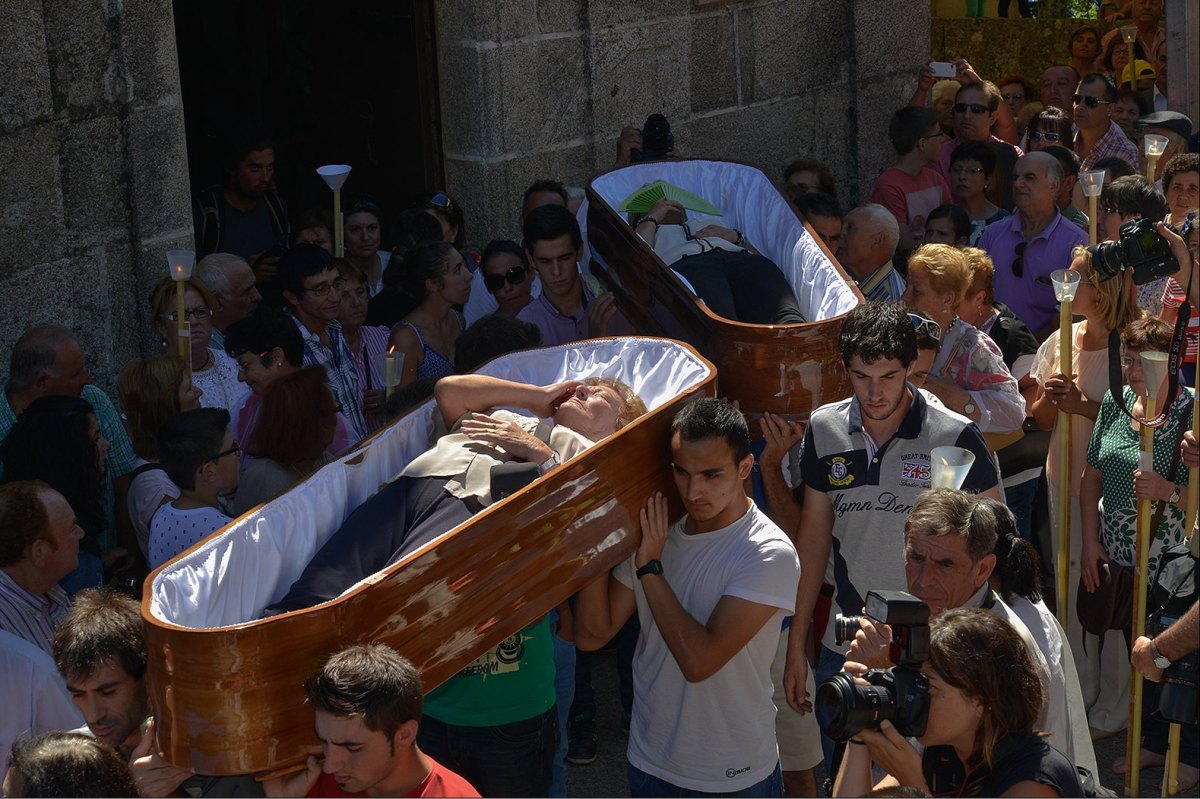 Photo by Jose Maria Moreno Garcia Those who have had a brush with death in the past year are carried through the streets in coffins to thank Saint Marta de Ribarteme, the 'patron saint of death'. Those that don’t have friends or family to carry them have to carry their own coffins. Rather sad. However, in true Spanish fashion everyone rejoices with music, food and drink and the telling and re-telling of their near-death experiences! Human Tower Building Competition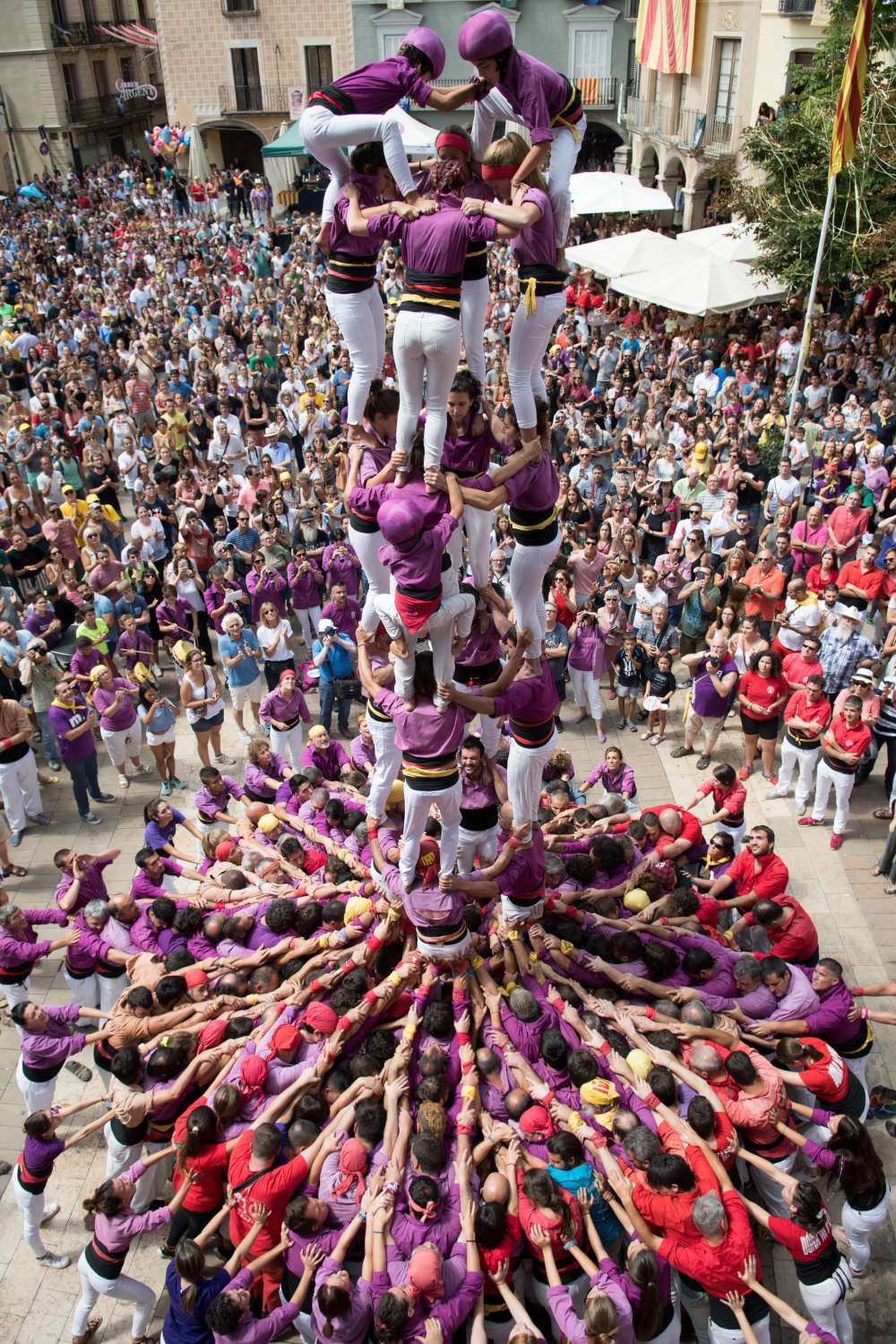 Photo by Michał Parzuchowski on Unsplash The city of Tarragona in Catalonia celebrates the world's biggest human tower building competition, every other year. The tradition of building these astonishing 10 meter-high human towers has a long history in this region, dating back to the 18th century. As you can see, towers are made of people standing over other's shoulders and finally a small child climbs to the tip of the trembling tower (you can see one this kid climbing half way the tower in the photo above). Human towers have a remarkable aesthetic and they are a sample of human achievement over the physical laws. In fact, human towers have been declared an intangible cultural heritage by UNESCO. At the same time, we can stop thinking about the amount of weight the guys at the bottom are supporting, and how someone can feel when climbing over three or more floors of a not stable stair of humans. Absolutely insane! Tamborrada, Drum FestivalTamborrada of Donostia is a celebratory drum festival held every year on January 20 in the city of San Sebastián, Spain. At midnight, at the Konstituzio Plaza in the Old Town, the mayor raises the flag of the city. The festival lasts for 24 hours. Participants, dressed as cooks and soldiers, march in companies across the city. The origins of the celebration are not clear. According to the most popular version, the tradition was started at the beginning of the 19th century, when Napoleon's troops invaded San Sebastian and the local women would mock the French soldiers who marched around the city streets by banging buckets. Maybe you think that a drum festival is not so weird. Go there and experience that loud drum sound continuously non stop for 24 hours and send us your feedback. Running the Bulls or Running WhateverSure you've heard about running the bulls, during the San Fermin Festival, where people run in front of big bulls through the old town of Pamplona. This event, where runners risk their life, is weird enough to put in this list, but keep reading because it will get even more surreal. Perhaps because using bulls as entertainment (that later in the afternoon will end sacrificed in the bull ring) is harming the sensitivity of more and more citizens, a trend of Running Whatever is becoming the new thing. A couple of examples: Running the BusIn Torralba de Ribota (Aragón), at the end of the local festivity, people run in front of the public bus that leaves at 8:00AM. I know you don't believe us, but have a look at this video: Running the Ball (Boloencierro)In this case, locals from Mataelpino, not very far from the capital Madrid, decided to run in front of a heavy giant ball. Supposedly, the replacement of the bulls is because the ball was cheaper than the bulls (at the end, they are not stupid). Also in the first editions they used a heavy ball of about 200kg but after several people got seriously injured they replaced the ball with something lighter, just 30kg rolling towards you. Still, in 2019 the major of the town broke his collar bone trying to avoid the ball. More weirdnessDo you know of any other weird and wonderful festivals in Spain? Let us know in the comments below, or share your story right here!
Having nursed our injured team member and worried over her likely journey from here, we understood she was in excellent hands, so of course we were itching to get back on the bikes to finish our journey. That meant leaving Burgos. It wasn’t a place with good memories so we weren’t going to hang about even for a few more hours after her husband arrived. It was bucketing down rain, but we didn’t care. On the bikes and away sometime late-afternoon, with no idea where we might end up that day.
Leaving BurgosI don’t remember how long we rode for but my memory is that it wasn’t very long before we decided the rain was too much and wasn’t looking like easing any time soon, so we decided to take shelter. Well back in 2003, information on hostels was very scant. We were aware there was one nearby, but had no idea what it was like or how to gain access to it. 
Still bucketing down rain, we located the locked albergue with not a soul around. It was a very desolate small 2 storey building which was in degrees of disrepair in a fairly residential area. Not sure how we got the key, (I think by talking to locals with our very limited Spanish) but we got in drenched and dripping to a small room with mattresses stacked in a corner and not much else. I think we might have been the only ones who have ever used it, but we were grateful for it at the time.
In the morning we reflected that in fact our mad desire to get out of Burgos had been thwarted as we were still only on the outskirts of the city!! We were also as you can imagine, a little nervous about taking to the busy highways and agreed to continue on the “true” path, only deviating to roads when they were parallel to it and not heavy with traffic.
Waking to a clear sky, we packed and planned to head off for a very early start. We had been told to leave the key inside and lock the door as we left, so we dutifully did that and mounted up when we realised a helmet was still inside behind the locked door!
Throwing ideas around, riding back into Burgos to buy a new one was not on the top of the list as we both wanted to get as far away as we could from this city. Having exhausted most options in our minds, we scouted around the perimeter and located an opening window on the upper level. Hazardous you might think, but we were pretty desperate. Access gained and helmet retrieved and despite our desire to have an early start, at least we could now escape Burgos!
The first part of the road was fine until Rabe de las Calzadas but the trail then took us through fields with a very soft and pitted surface. As you can imagine, rain does wonders for this and bicycles. After trying to navigate sections with 3 or 4 inches of mud, it was walking time for me. I had ridden ahead and couldn’t see my travel companion behind me but figured she would likely be in the same boat. Ever tried pushing a heavily laden bike through mud? It was a tedious 8km into Hornillos del Camino. 
At the entrance to the village a farmer saw my plight and offered me a hose to remove the mud. Making headway with the cleaning I looked up to see a bike yet another Camino angel, offered to take her and the bike on his truck the next morning to get it fixed - being carried between two people, one being a gallant young man with a huge backpack. My first thought was, oh how lovely, that did look much easier than my pushing my touring bicycle through the mud.
Putting the bike down I learned it hadn’t been a simple exercise at all. She had been endeavouring to ride through the mud rather than push it and a rock lodged itself and snapped her derailleur. She had tried carrying it on her own through the slippery mud, when, as the Camino always does, a saviour was provided in a moment of need. The closest place for any possibility of repair was, yes, you guessed it, Burgos!! 
We both thought at that point that this was too hard and perhaps the cosmos was trying to tell us something. But no, the hospitalero, yet another Camino angel, offered to take her and the bike on his truck the next morning to get it fixed. So back she went to Burgos.
Leaving Burgos - again!
Three days later and only about 20km traveled, we truly escaped Burgos. In high spirits and fine weather we made sure each day from here on that we would seek local advice on the trail’s suitability for bikes and when it wasn’t we took to the road. This worked well and we had about 10 days of absolutely glorious riding through the plains of the meseta, Leon and Astorga until we came to O’Cebreiro. But that is another story... |
Cycling In Portugal |
Cycling In Spain |
Bikes & Equipment |
Follow UsFollow us on social media where we share all our special offers, news, events & more.
|
CONTACT Us |
Terms & Conditions | Privacy Policy | Travel Agents | Press Kit | Travel Insurance © Cycling Rentals 2022
Cycling-Rentals is a division of Cycling through the Centuries. Registered Tour Operator RNAAT nº58/2006. Registered Travel Agent RNAVT nº 5035
Cycling-Rentals is a division of Cycling through the Centuries. Registered Tour Operator RNAAT nº58/2006. Registered Travel Agent RNAVT nº 5035
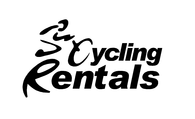
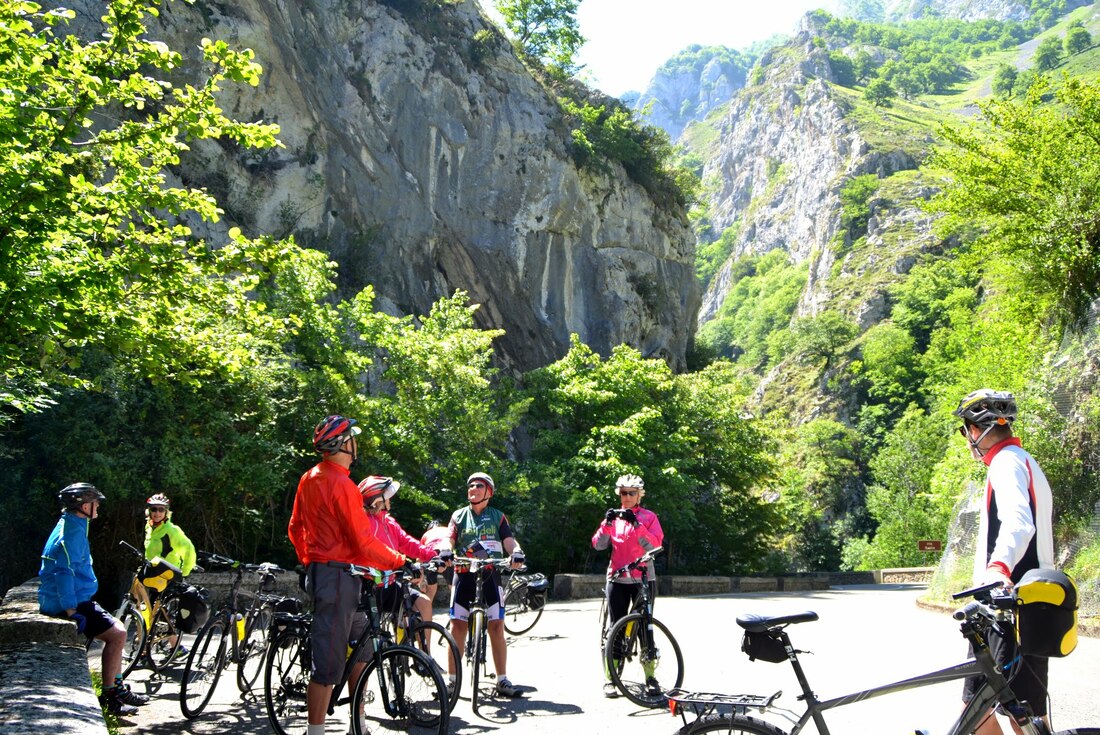
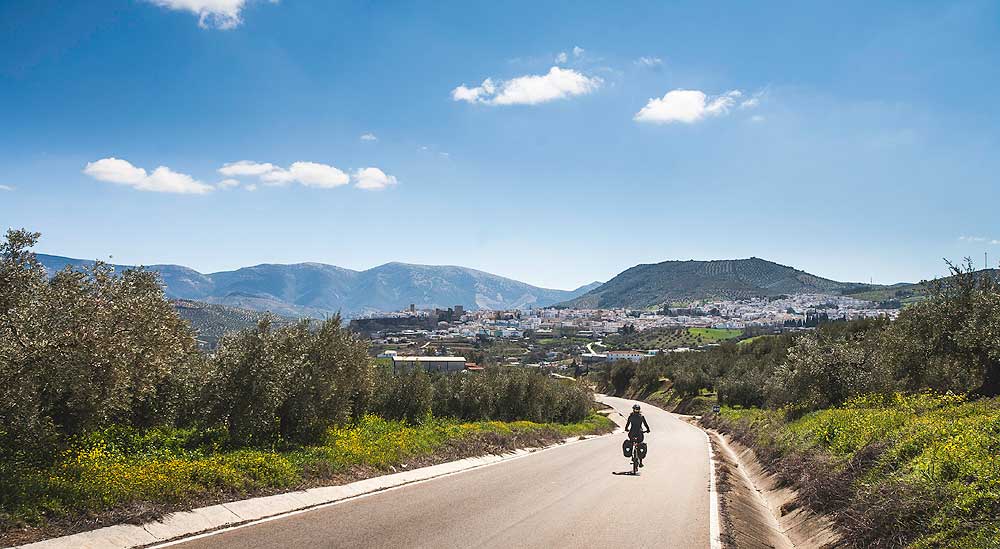

 Photo by
Photo by 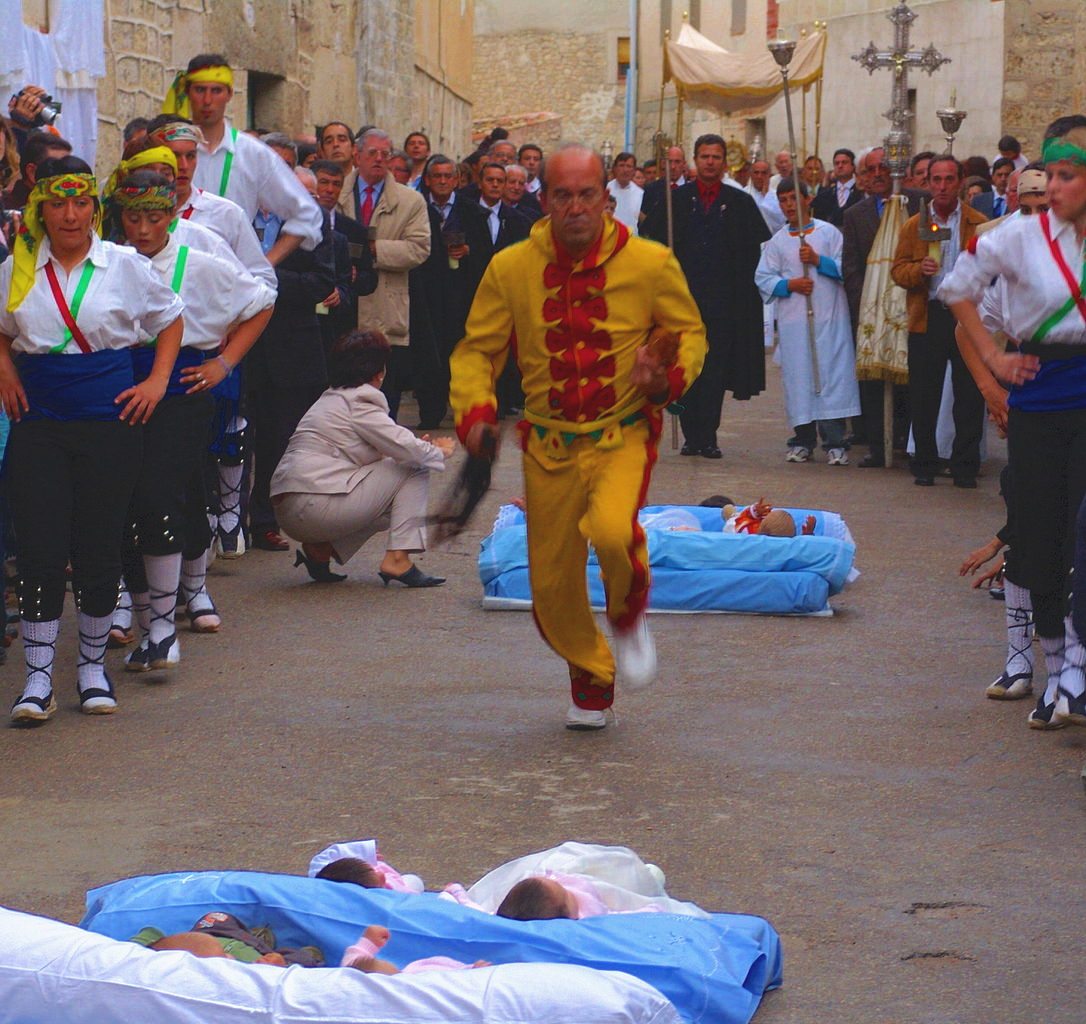
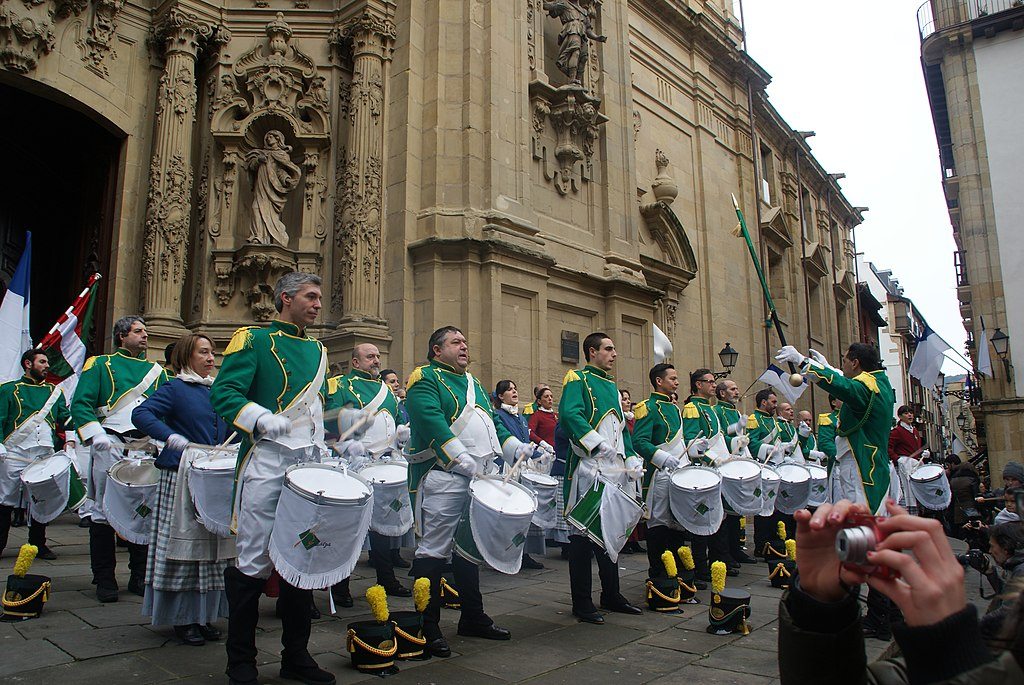
 RSS Feed
RSS Feed





